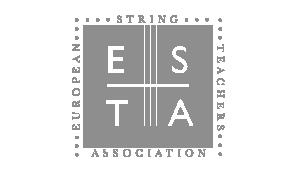As musicians move out of pandemic-induced hibernation, back into rehearsal and on to the concert platform, there will surely be excitement and joy. An email I received last week from a professional violist, however, made me reflect on what an important transition this is for so many and what else might be lurking in the wings as we return to ‘normal life’.
I'm trying to get ready for the looming concert season and the idea of gigs picking up again, but I'm finding it physically challenging. I've taken some time offfrom playing during the pandemic because the playing that I have done has made me uncomfortable. I was hoping you could help....
What, I wondered, will musicians be feeling? Fear of judgement, failure, or injury? Worry we’ve lost our chops? Or our jobs? Feeling fragile, guarded, mistrustful, panicked, depleted, resentful? Angry....? Oh yes. Angry. With 50% government funding cuts announced in the UK just as we are making our tentative way back into a profession that is already vulnerable, that one is sure to show up. We may even be scared that music will have lost its meaning for us completely. These feelings, as we sit once again in a quartet formation, in a lesson, exam, audition or concert hall, will probably find lodging somewhere in our bodies and, at this very particular moment in time, it seems important to address that. How do physical and emotional patterns connected to playing manifest deep within us, and how we might move through them as we start to play again?
My own relationship with emotions in the body started to deepen, as is often the case, with an injury. During the week in which I was rehearsing and performing Bach’s Goldberg variations, I developed not one, but two hernias in my cervical spine. As someone who draws on yoga and mindfulness to teach people to move and breathe freely, I just couldn’t fathom why this was happening to me. I breathed through my Scaravelli yoga practice every day, I did Alexander Technique inspired swimming, I meditated.... I played the cello in as relaxed a way as anyone I knew. What had this injury come to tell me? After months of injections of nutrient-rich sea water into my top vertebrae, and a visit to just about every healer on the Provençal block (luckily there aren’t many), I found myself seated on a somewhat grimy massage table in the village of Caromb, leaning over my belly in my worst bra (why do we ladies always forget to don our best for the medics?) and being told something I never thought I’d hear, let alone recommend for any of my students: ‘Madame, you need to learn how to slump!’ Inwardly I protested: What? Slump? I have always had brilliant posture! Everyone has always commented on how straight my back is when I play! At the same time, I felt a resonance with this quirky piece of advice, understanding for the first time that, as a result of fifty years’ ‘good’ performance posture, I habitually over-extended my spine. I started exploring the over-arching of my lower back and pushing forward of my breastbone. I started to emphasize flexion postures in my yoga practice - shoulder stand, child’s pose, forward bends - and gradually realized that I was never fully allowing my back to round out even in these flexion movements. I became more aware by the day of what was happening in my spine on a physical level, but every time I found myself in a performance-like situation (which included establishing the correct way to sit for a meditation or wanting to convey something important to someone I admired) the ‘good posture’ that had caused my injury returned. There was obviously a great deal more to understand, and what better time than a concert-free pandemic in which to do it. This is what I have been reflecting on:
The spine moves in four basic ways: Extension, flexion, side bending and rotation (twisting). We all know it is designed, with those lovely vertebrae and its sensual S shape ideal for cushioning and springing, to move, but how much do we restrict that movement without knowing it?
First, there are the mechanical demands of our instrument. Each has its own challenges which can create habitual biases in the spine. For example, a cellist habitually twists to the left to reach the A string. A violist might tend to pull the left side down (side-bending) to compensate for the weight of the instrument. There is nothing wrong with either of these movements in and of themselves. In fact, quite the contrary. If a movement involves the whole spine, is released and healthy, returns easily to neutral and is balanced with equal movement in the other direction, it is exactly what is needed to keep the spine alive and dancing. The trouble is we become fixed in one posture.
Secondly, there are the messages we have received - from our parents, teachers or indeed our entire culture - about posture itself. Here are three examples and some ways in which we might respond:
‘Shoulders back and down’ sends us into military position, stiff in the thoracic spine with the shoulder girdle denied its natural forward and up movement.
‘Don’t slump’ pushes the breastbone forward, pulls us up out of our grounding and makes us over-arch in the lumbar spine.
‘Sit up straight’ does both of the above and more.
Thirdly, there are performance-related messages that can touch on the emotions. Thoughts form in response to these that calcify into yet more postures. Here are a few of those messages, how we might interpret them and some ways in which they might manifest in our bodies:
‘Be open’ (I have to open up to strangers, even if I don’t feel safe. Push the breastbone out, over-arch the spine)
‘Project’ (I have to project my sound outwards even if I think I have nothing to say. Forget my back. Push everything forwards in space)
‘Be confident’ (I must not show my vulnerability. Pull up to feel ‘taller’. Harden in the front of the body.)
‘Stay in control’ (I must not let go. Block any muscular release.)
The list goes on and the body follows, doing its best to conform to our various demands. Though there are consequences in the whole body, I am going to give particular attention here to over-flexion and over-extension of the spine which seem to be the two extremes into which we as musicians habitually go.
Let’s face it, most of us, when it comes to performance, start from a place of at least slight if not intense insecurity, and that is going to be especially true today. We mustn’t forget, however, that being shy is not the only expression of this feeling. Bravado is also an expression of lack of confidence. My own insecurity tends to express itself this way - in sitting up straight’, being ‘open’ at all times and ‘communicating’ to the max to my colleagues, conductor and audience. This manifests in my breastbone being pushed forwards, stiffening my thoracic spine, my lumbar
spine hollowing out and my head thrown back and down (hence the hernias). In other words, over-extended. I also take in too much air (hyper-ventilation) and project forward in time, thinking about up-coming passages rather than being in the moment. Meanwhile, not two feet away (depending on the COVID regulations) a ‘shy’ colleague might be recoiled as an expression of her insecurity. Her breastbone might be caved in, her shoulders hunched and her lumber spine collapsed. In other words, over-flexed. She might not take quite enough air into her lungs (hypo-ventilation) and she might be regretting a recent passage she fluffed which takes her out of the present moment. Essentially, we are both feeling the same thing and expressing it differently. We are both feeling fear.
These two extreme attitudes – over-flexion and over-extension – remind me of two of what are sometimes called the three poisons in Buddhist philosophy - desire and aversion (the third being delusion). They are perfect expressions of our relationship to ourselves and our audience when it is out of balance, which it is bound to be as we go back to live work. In over- extension we are (and the spine is) grasping (pushing, over-communicating), and in over-flexion we are (and the spine is) retreating (pulling away, aversion, hiding). Somewhere, in the flow between these two postures, we are present. This is the middle way, and I believe it lives in our spine as much as it does as in our minds.
The Fourth Noble Truth is the path to the end of suffering. This path is called the middle way. The middle way invites us to find peace wherever we are, here and now. By neither grasping nor resisting life, we can find wakefulness and freedom in the midst of our joys and sorrows. Following the middle path, we establish integrity, we learn to quiet the mind, we learn to see with wisdom.
Jack Kornfield
I continue to explore this in my practice and teaching, and crucial to that exploration is learning about how the breath moves the spine. Slowly, I am discovering how to befriend both extension and flexion not as places to cling to in extremis but as natural components of the wave of the body.
Put simply, when we breathe in the spine moves into flexion and when we breathe out it moves into extension. But it is more nuanced than that. Here is a fuller description by Peter Blackaby, from his book Intelligent Yoga which explains why we often miss this movement.
When we breathe in the ribs elevate. The lower ribs tend to widen in a bucket handle fashion, and we feel ourselves widen in the lower trunk. The upper ribs and breastbone lift forwards and upwards in a pump handle fashion, and we feel ourselves get deeper from front to back in the upper part of the trunk. Movement of the spine is often missed in this action. When we breathe in, the ribs do indeed lift, and push the breastbone forwards, but the thoracic spine is at the same time pushed backwards; every inhalation is accompanied by a gentle forward bending of the thoracic spine, while on every exhalation the opposite happens, and the spine moves towards extension.
What I find fascinating in this description is the fact that as we breathe in, we are widening and elevating in the ribs, but rather than the pulling up we often associate with the inhale, we are actually rounding out in the back, shortening if you like or, to use a term from the animal kingdom, ‘gathering’. As we breathe out, the ribs are lowering and narrowing but, rather than the collapse we often associate with the exhale, we are actually releasing into length. We are always maintaining two directions at once, just like the wave. If we are aware of this dual movement, we can begin to open from the front of the spine whilst staying soft in the chest and preserving the rounding out in the thoracic vertebrae. As we become energetically grounded instead of leaden we can flow instead of pull upwards. We can relax open, release up, release down and rest back.
So, as we re-enter live music-making, can we listen to what our spines are telling us? If we feel ourselves over-arching we can ask: What am I feeling? And perhaps, by acknowledging the feeling with compassion, we can invite our lumbar spine to rest back just a little, and the feeling can release its hold on the body. Similarly, if we find ourselves feeling fear, we can ask: Where am I feeling this in my body? We might feel it in a collapsing of the chest or a stiffening in- between the shoulder blades. By encouraging ourselves to feel the natural response of the thoracic spine to the breath, the grip of fear might relax.
As musicians move out of pandemic-induced hibernation, back into rehearsal and on to the concert platform, there will surely be excitement and joy. An email I received last week from a professional violist, however, made me reflect on what an important transition this is for so many and what else might be lurking in the wings as we return to ‘normal life’.
I'm trying to get ready for the looming concert season and the idea of gigs picking up again, but I'm finding it physically challenging. I've taken some time offfrom playing during the pandemic because the playing that I have done has made me uncomfortable. I was hoping you could help....





